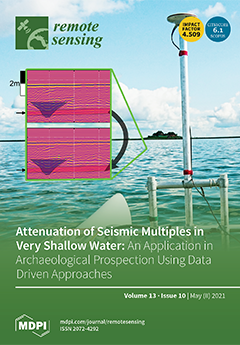This study analyzes the geophysical signals in
J2 time series from 1976 to 2020 by using singular spectrum analysis (SSA) and the Lomb-Scargle (L-S) periodogram for the first time. The results of SSA indicate that the secular trend is characterized by a superposition of the secular linear decrease with a rate of approximately (−5.80 ± 0.08) × 10
−11/yr and an obvious quadratic rate of (2.38 ± 0.02) × 10
−13/yr
2. Besides, the annual, semi-annual, and 10.6-year signals with determining for the first time its amplitude of 5.01 × 10
−11, are also detected by SSA, where their stochastic behavior can be maintained to the greatest extent. The 18.6-year signal cannot be detected by SSA even when the window size of 18.6 years was selected, while L-S periodogram can detect the signal of 18.6 years after removing the 18.6-year tidal theoretical value and the linear trend, proving the existence of the tidal variations of 18.6 years in the residual time series. Nevertheless, the 10.6-year signal can be found only after removing the secular trend. This fact suggests that the advantages of different methods used will lead to different sensitivity to the particular signals hard to be detected. Finally, the reconstructed Δ
J2 time series through the sum of the climate-driven contributions from glacial isostatic adjustment (GIA), Antarctic ice sheets (ANT), atmosphere (ATM), continental glaciers (GLA), Greenland ice sheets (GRE), ocean bottom pressure (OBP), and terrestrial water storage (TWS) by using GRACE gravity field solution and geophysical models agrees very well with that of the observed Δ
J2 from SLR in terms of the amplitude and phase. About 81.5% of observed Δ
J2 can be explained by the reconstructed value. ATM, TWS, and OBP are the most significant contributing sources for seasonal signals in Δ
J2 time series, explaining up to 40.1%, 31.9%, and 26.3% of the variances of observed Δ
J2. These three components contribute to the annual and semi-annual variations of the observed Δ
J2 up to 30.1% and 1.6%, 30.8% and 1.0%, as well as 25.4% and 0.7%, respectively. GRE, ANT, and GLA have ~3 to ~7-year periodic fluctuations and a positive linear trend, excluding GIA.
Full article





